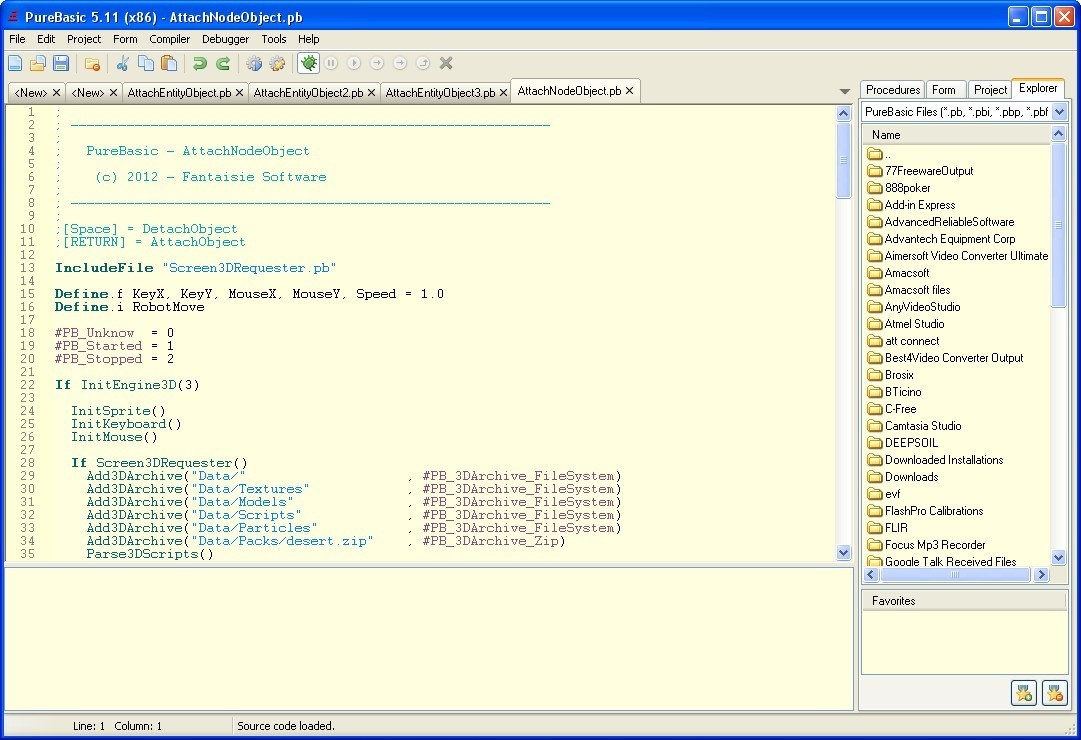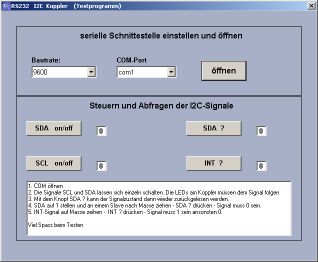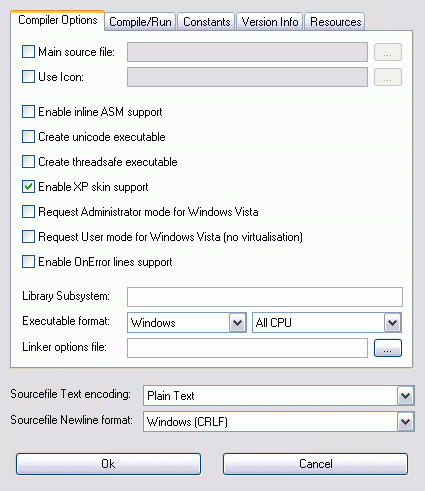

MessageBox(0, TEXT("DLL from Autoit"), TEXT("Simple Dll."),0) // Use good old Message Box inside Windows Api Functions but this time with your own dll }Īnd thats it, we are done with configuration of header and source and we can compile our DLL file for later usage(note that you must set configuration properties of your project to use Unicode character set (so TEXT() macro in our.
Purebasic dll .dll#
Std::cout << "DLL Called! Hello AutoIt!" << std::endl // This silly function will just output in our Autoit script "Dll Called!" Return( a + b ) // Finally we define our basic function that just is a sum of 2 ints and hence returns int(c/c++ type)

#include "basicdll.h" // We include our header file which contains function declarations and other instructionsĮxtern "C" // Again this extern just solves c/c++ compatability Make sure to use it because Autoit wont open dll for usage without it! #include // this is where MessageBox function resides(Autoit also uses this function) Right Click on the "Source Files" folder icon, chose add new, pick "basicdll" as the name and follow on. #endif // closing #ifndef _DLL_TUTORIAL_H_ Remember that DECLDIR is just a shortcut for _declspec(dllexport) Here we declare our functions(as we do with normal functions in c header files, our cpp file will define them(later). Note that there is also _declspec(dllimport) for internal linking with others programs but since we just need to export our functions so we can use them with Autoit, thats all we need!Įxtern "C" // this extern just wraps things up to make sure things work with C and not only C++ We #define _declspec(dllexport) as DECLDIR macro so when compiler sees DECLDIR it will just take it as _declspec(dllexport)(say that DECLDIR is for readability) #include // Inlcude basic c++ standard library output header(this is used for output text on the screen in our code)
Purebasic dll code#
#define _DLL_TUTORIAL_H_ // This is basically to tell compiler that we want to include this code only once(incase duplication occurs), you include it in. Simply paste this code into the header file

Right Click on "Header Files" folder icon and chose "Add New", then lets pick "basicdll" as the name So i say great, lets test some basic dll file, open up visual studio(anything else should be fine unless you are complete noob) and lets define few things, first thing first // note: i changed the code a bit so pictures might show different code
Purebasic dll how to#
If you are new to dll files, this post will show you how to create basic Dll. I dont see it covered anywhere so i thought to start this with a simple tutorial how to create your basic dll in c/c++ then hopefully some guys will jump in and contribute To spice up your imagination, if you could handle your own dll code and incorporate it to AutoIt, there are simply no limits! Lua itself is distributed under the terms of the MIT license.It is a great thing to handle already awesome winapi dll files like some of tutorials show you already but what about using your own dll files? The *.dll files can be found in Libraries\Lua\Binaries\Windows\x_\, for Linux no files have to be copied because the static version of Lua is used there for easiness. To make Lua work on Windows you have to copy the according (x86 or 圆4) shared library (*.dll) into the same folder as your application. It shows how to create a Lua state, how to register PB functions to make them accessible from within Lua, and how to load and run Lua-strings or Lua-files. UsageĪn example on how to use Lua is included in this repository. MacOS should also work, but for this some additions have to be made to the include and the correct shared/static library files have to be gathered or compiled manually. Supported operating systems are Windows and any Linux derivative (Even though Linux was only tested with an older version of Lua). This repository contains all needed binaries and include files to embed Lua into PureBasic.


 0 kommentar(er)
0 kommentar(er)
